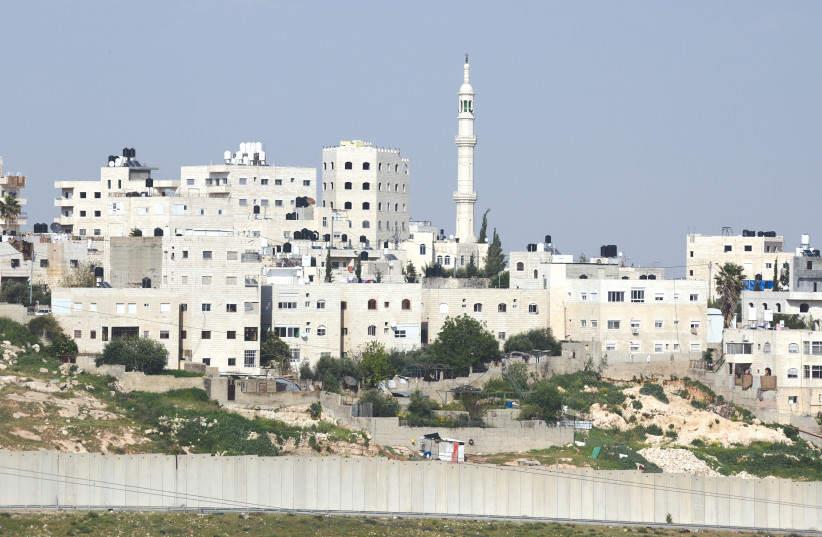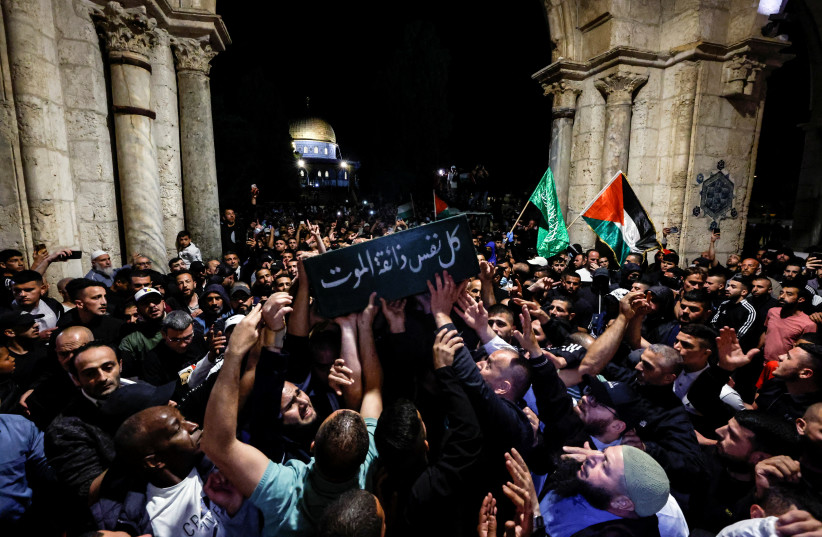There are certain neighborhoods in east Jerusalem that would be life-threatening for Jews to step into.

The images that have emerged from Jerusalem the last week or two have been alarming.
Israel’s capital has been rife with unrest and violence as Arab residents of east Jerusalem and its environs have come out in a full show of force against the trappings of Israeli rule.
Last Friday, thousands gathered to participate in the funeral of slain Al Jazeera report Shireen Abu Akleh, replete with Palestinian flags and nationalist slogans.
The funeral, one of the largest events of its kind in many years, was seen by many Palestinians as a major national event in the heart of Jerusalem. The manner in which they were met by Israel’s police forces – which has been covered extensively both here and by global media – only added to the sense that east Jerusalem was not only a different city from west Jerusalem but an altogether different country.
This week, that feeling was accentuated by what KAN called the most violent day in the capital since last year’s Operation Guardian of the Walls, as Palestinians got another chance to display a massive show of force.

The huge turnout for the funeral was spurred on by calls on social media by Hamas and other Palestinian groups, The Jerusalem Post’s Khaled Abu Toameh reported. He noted that the goal was to show there is no difference between east Jerusalem and the West Bank or the Gaza Strip.
The turnout and the violence and resulting arrests were not that different from previous scenes of rioting, vandalism and clashes with the police that have become almost commonplace in many areas of east Jerusalem, especially in communities like Isawiya, Shuafat and Silwan.
The names of those neighborhoods might be familiar to readers, but most would probably be unable to recall when the last time was – if ever – they entered one of them.
The reality of Israel today is that there are large swaths of its capital city that are too dangerous to step foot in if you’re Jewish. Even the police and municipal civil servants avoid going near them.
One might argue that there are plenty of high-profile cities around the world – from Chicago to Paris – that have neighborhoods and areas with huge crime and murder rates that many people would go out of their way to avoid.
But Israel prides itself on its “unified” capital, with every government and prime minister over the 55 years since the Six Day War vowing that Jerusalem will never be divided.
That unblinking belief that the eastern part of Jerusalem will never be up for negotiation might have something to do with Wednesday’s decision by the police to allow this year’s Jerusalem Day Flag March to enter the Old City through the Damascus Gate, after the route was blocked last year due to threats from Hamas that turned into Operation Guardian of the Walls.
The march, which should be a national, non-political event celebrating Israel’s victory in 1967 and the reunification of Jerusalem, has long since turned into a right-wing-fueled show of strength, aimed at boasting ownership over the city, even the Arab sections inside and outside the Old City.
Although the final decision on the march’s route will be made by Prime Minister Naftali Bennett in consultation with the Shin Bet (Israel Security Agency), organizers of the march welcomed the police decision, saying, “There is nothing more suitable than a happy and unifying march, from the west of the city to the east, through the places that the IDF liberated 55 years ago, on the holiday of the capital of Israel.”
Statements like that don’t jibe with the images of riots, clashes and violence that have been plaguing that capital almost every day in recent weeks. Marches like those the organizers want to hold are nice ideas but they can’t exist in a vacuum. Israel has long ago forfeited sovereignty over parts of Jerusalem. A march through Damascus Gate won’t restore it.
Content retrieved from: https://www.jpost.com/opinion/article-707223?fbclid=IwAR1ieqWS8omSKJX1reX6s2q0bIzA1c7DTmQOAjsSK3HmlqJmWS4udjAtSCo.